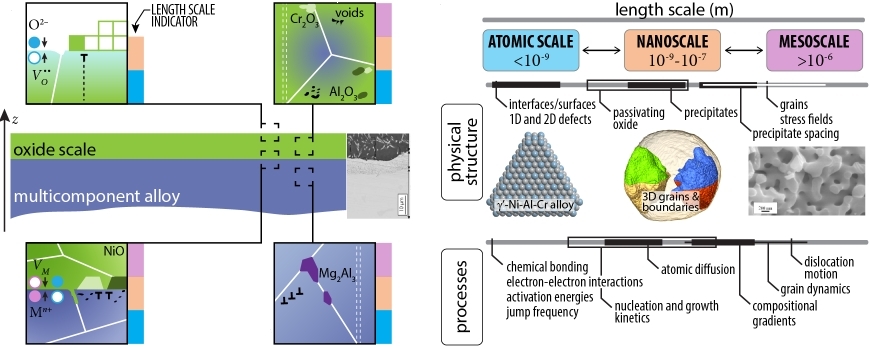 Understanding Corrosion in 4D, an ONR Funded MURI
Understanding Corrosion in 4D, an ONR Funded MURI
 Understanding Corrosion in 4D, an ONR Funded MURI
Understanding Corrosion in 4D, an ONR Funded MURI
|
We believe that a comprehensive experimental and theoretical attack on the details will enable us to understand what matters, what does not, and lay the basis for a paradigm shift in corrosion-resistant materials.
Corrosion is the deterioration of a material, usually a metal, and/or its properties due to chemical reactions with the environment. It affects the longevity in
applications ranging from gas transmission pipelines to DoD/ONR warfighters and warships. The total cost of corrosion in the United States was $276
Billion in 1998, about 3.15% of GDP, and in 2010, the Department of Defense (DOD) estimated that corrosion costs the department over $23 billion
annually and an October 2009 study estimated that corrosion is responsible for up to 16% of the unavailability of the equipment reviewed.
 In the last decade there has been a convergence of forces creating the opportunity to reinvent our understanding of corrosion at the nanoscale. As shown above: multiple processes occurring over wide spatial and temporal scales control the nucleation, stability, and utility of oxide scales. An integrated multiscale modeling conbined with real and reciprocal space experimental characterization tools is required to fully understand and predict corrosion processes. |